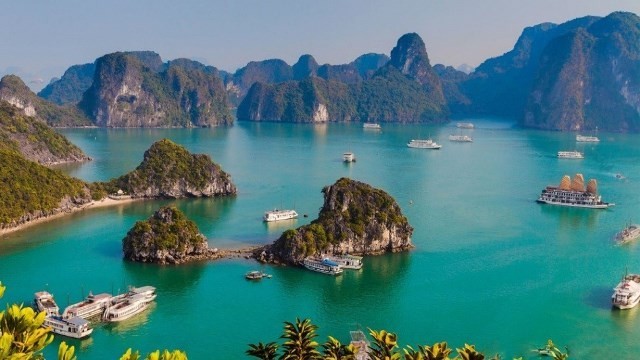
Hotels vie for share of tourism pie
Latest
| TIN LIÊN QUAN | |
| Hue Imperial Citadel ranks second among most visited destinations | |
| Can Tho seeks to boost tourism at Bang Lang stork garden | |
The survey, done by Grant Thornton Vietnam for the last 14 years, provides financial, operational and marketing information for 2016 from a range of four- and five-star hotels and resorts.
The number of tourists is expected to rise significantly this year after a lull in 2015 and a sharp increase of 26 percent last year, said Trinh Kim Dung, director of advisory services at Grant Thornton Vietnam.
 |
| A hotel in Da Nang City of Vietnam. (Photo: vietnam-guide.com) |
Last year the country welcomed 72 million domestic and international visitors, higher than the target of 68.5 million visitors set by the Vietnam National Administration of Tourism, Dung said at a press meeting on July 11.
"The Vietnamese tourism industry recorded 10 million international visitors and the highest annual increase of two million. As a result, the performance of the hotel industry is expected to improve after a period of stagnation,” she said.
To accommodate the increasing arrivals for leisure and recreation, 41 new 3- to 5-star hotels with more than 8,700 rooms opened their doors last year.
The total number of rooms has increased to more than 420,000, much higher than in neighbouring countries like Malaysia, Laos and Cambodia.
The average room rate of upscale hotels last year saw a 1.3 percent increase year-on-year to 88.1 USD.
The rate for four-star rooms was 75 USD, a rise of 3.8 percent but still far behind the 2014 level.
Five-star rates again dropped slightly to 104.4 USD from 106.8 USD in 2015.
Revenue per available room (RevPAR) increased in both star categories: a 10 percent rise for four-star hotels to 51.4 USD, and 4.1 percent rise for five-star hotels to 68.7 USD.
The hotel industry last year saw a recovery with occupancy rate increased for high-end hotels.
The average occupancy rose to 67.2 percent from 61.5 percent for four-star hotels and to 68 percent from 62.7 percent for five-star hotels.
Individual tourists, tour groups and business travellers together made up more than three quarters (77.6 percent) of total number of guests staying in high-end establishments last year.
“Travel agents and tour operators remained the largest booking channel at high-end properties, accounting for 37.3 percent of reservations,” Dung said.
This ratio has, however, seen a gradual decline over the years, and fell by 3.1 percentage points last year.
The survey says that with the 4th Industry Revolution affecting all sectors of the economy with many high-end hoteliers are preparing for what is to come, a notable increase was seen in the application of digital technology by hotels. Last year, 67.3 percent used it compared to 49.3 percent the previous year.
Another 18.6 percent plan to get on the bandwagon this year or the next with those who said they have not made any decision with regard to using digital technology dropped from 23.9 percent to 15.4 percent.
 | Festival promotes culture of Cai Rang Floating Market The second Cai Rang Floating Market Culture and Tourism Festival kicked off in the Mekong Delta city of Can Tho on July 7. |
 | Vietnam among world’s fastest growing travel destinations Vietnam was recently listed among the world’s 20 fastest growing travel destinations by the United Nations World Tourism Organisation. |
 | Online tourism development - an inevitable trend in Vietnam The development of online tourism in Vietnam is an inevitable trend as the non-smoking industry is strongly affected by technological advances. |

















